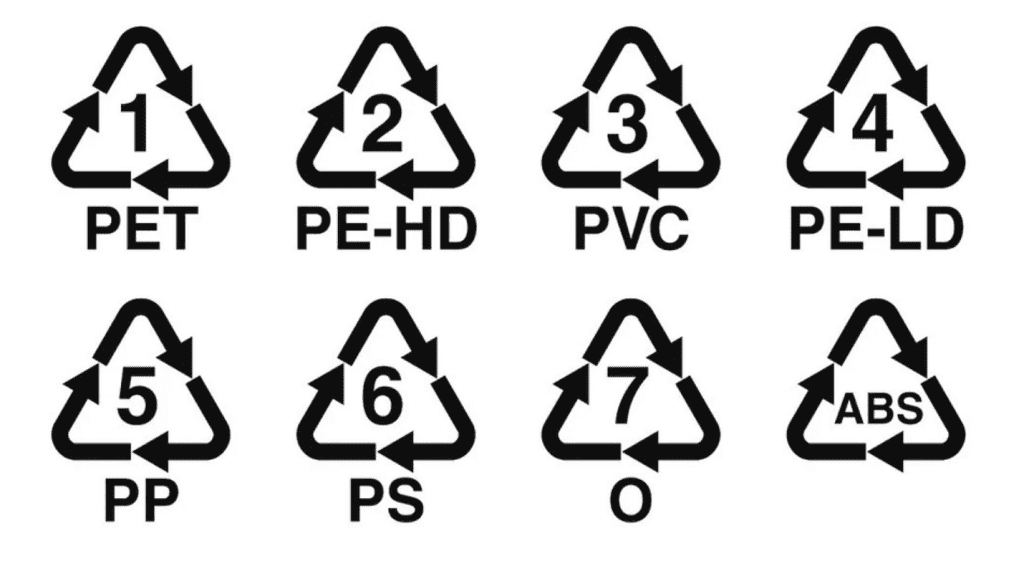Can I heat food in a plastic dish in the microwave? The answer depends on the type of plastic – some polymers easily tolerate temperature fluctuations, others emit harmful substances and are only suitable for storing food.
What plastic can be heated in the microwave?
For a plastic container to be used for heating food in the microwave, it must have high strength and resistance to high temperatures. Three types of polymers common in everyday life have such properties:
- PP or polypropylene. A flexible composite material that is highly resistant to prolonged heating and temperature extremes. It is considered the safest type of polymer for heating food – but not for alcohol-containing products, which can lead to the release of formaldehyde and phenol. It is undesirable to heat dishes that contain oil and sugar – their strong heating can damage even this durable material.
- PET or polyethylene terephthalate. It is applied to packing of the frozen products with a possibility of heating. However, when the material is reheated, substances hazardous to humans are released – phthalates. You can use PET for warming up only once.
- PEHD or high-density polyethylene. It is used as packaging – including for products. Due to mixed opinions on compatibility, it is suitable but not recommended for heating food in the microwave.
The marking, usually located on the bottom of the container, helps determine the possibility of using a plastic container in the microwave. This may be an icon in the form of a schematic image of a microwave oven or horizontal waves, the inscription micro or microwave oven safe. Sometimes – a square with a plate and a schematic representation of microwaves. Materials are designated by numbers – one is PET, two is PEHD, and five is polypropylene.
Features of using different materials
Even if plastic containers can be used to heat food in the microwave, there are a few important rules to consider:
- When heating, it is desirable to choose a low power. This increases the duration of the process but avoids too high temperatures. This is especially important if the dishes are heated in containers made not from polypropylene, but from PEHD or PET. Setting the power too high may result in the release of harmful substances and their entry into food.
- Before starting heating, remove the lid from plastic dishes, and if there is a valve, be sure to open it. This will ensure the free exit of the steam that appears during heating and its free circulation over the surface of the products.
- It is undesirable to heat plastic dishes with visible damage in the microwave. Such containers are only suitable for storing food, but not for heating.
- The distance between the walls of the microwave oven and the container inside should be at least 20–30 mm. The container must be in the center of the turntable.
To avoid problems, when buying plastic containers, you should not save and buy cheap products from little-known manufacturers. The quality of such products is lower, and the probability of the release of hazardous chemical compounds is quite high.
To check the suitability of the container for heating in the microwave, you can try to press the wall with your fingernail – white marks remain on the surface of low-quality plastic.
Plastic that can’t be heated
Some types of polymers are not suitable for use in microwave ovens under any circumstances. They must not be exposed to even short exposure to microwaves and high temperatures due to the risk of melting the material. Therefore, before use, you should make sure that the container is not made of just such plastic:
- 3 – the number on the bottom indicates that the container is made of polyvinyl chloride (PVC or PVC). The material contains the hazardous substance bisphenol A and is not suitable for heating.
- 6 on a plastic container means polystyrene (PS or PS) suitable for storing food – but not for heating it in a microwave.
- 7 shows – products are made from a mixture of several types of plastic. Some of them may turn out to be dangerous, therefore it is not allowed to use such containers for heating.
- 4 – this is the designation of low-density polyethylene – LDPE or PELD. You can use it to heat food. But there are still no convincing research results proving the safety of the material, and it is undesirable to heat food in it.

